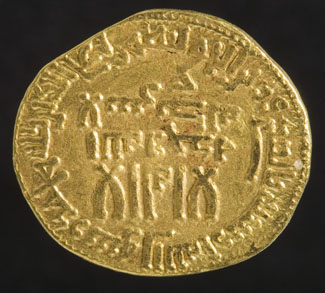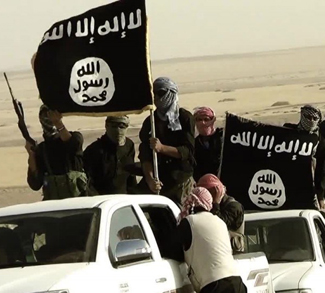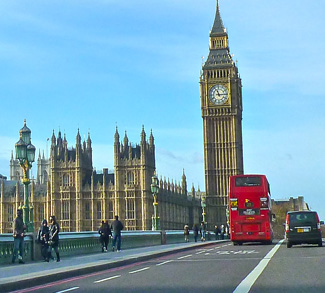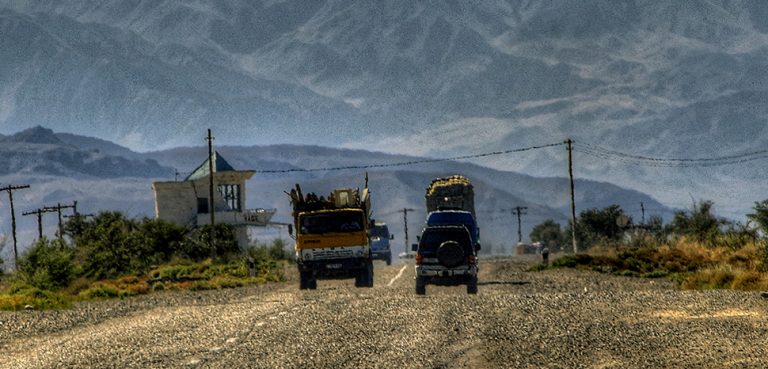The caliphate faces an enemy more deadly than the bombs being dropped upon it. It has not been able to construct a viable economy to provide all of the necessities that a society requires and people will not wait forever to fill their stomachs or for the lights to work.
A film released at the end of August by the Islamic State heralds the coming of a new gold Dinar currency. Najeh Ibrahim, a former member of the Islamist Gamaa Islamiyah, says that this tells the world that the Islamic State is a sovereign state and tells Muslims that their dignity and economic power is being restored.
In November of 2014, the idea of the gold Dinar was first announced. There was a debate within the leading circles of the Islamic State if it was a sound economic plan. In spite of doubts by some, the accumulation of gold and silver for the coins was undertaken, but little more was said of the new currency until the film Rise of the Caliphate: The Return of the Gold Dinar presented the issue as a part of the strategy of the Islamic State to destroy the United States and the West and to create an independent caliphate economy.
Return of the Gold Dinar continues the IS practice of tying every action to the Abbasid Caliphate that ruled much of the Middle Eastern region from 750 to the middle of the thirteenth century, which was an Islamic empire not much different from the Persian and Egyptian empires and minted its own coinage. The new coins are to display religious symbols like those on the original coins. Baghdadi would like his followers to imagine that they are a continuation of the long ago caliphate with only a mere 750-year disruption.
The idea is not new. The proposal to create a gold Dinar was advocated in 2002 when Prime Minister Dr. Mahathir bin Mohamad of Malaysia presented it at the Organization of the Islamic Conference. The problems in the economies of Muslim societies were attributed to foreign domination and a gold currency was to be the means of escaping dollar domination by creating a Muslim economic community.
Daesh’s monetary problem is not domination by the USD. Rather, it is that the erasing of the borders between Iraq and Syria did not change the line drawn by two separate economies using two different currencies.
If Daesh intends to create a single economy, it must create a common currency that will enable buyers and sellers to agree upon a price for goods and services without having to first decide upon an exchange rate.
The obvious solution is for Daesh to create its own currency that will circulate throughout the caliphate; but getting the public to accept the new colored pieces of paper from a government that may not exist in a few years makes conversion a near impossibility. The other choice is for people to conduct business in a currency that can be trusted, such as the USD or the Euro. The Turkish Lira is preferred in many cases over the local currencies, but using foreign currencies requires people to have access to them. How can people acquire sufficient foreign funds to finance their daily needs when the economy is isolated from the surrounding countries?
What commerce does occur is of a criminal nature. How much the caliphate acquires from the export of historical treasures or human organs or oil is all a guess. Contributions from wealthy supporters in Saudi Arabia or the Gulf States or ransom money from kidnap victims provides only a few drops in a desert that is consuming vast amounts of money to finance an ongoing war.
Much of the wealth of the caliphate comes from taxation of its citizens and sale of grain or petroleum that are kept as caliphate monopolies. Exploiting these resources, though, is finite. Farmers will not plant if they cannot expect a reasonable price for their crops and factories will not manufacture if the owner cannot acquire fuel or materials that he can afford or gain a profit that makes the effort worthwhile.
Getting fresh investment is a near impossibility and the economy is in decline which is making the acquisition of a new medium of exchange a serious issue that cannot be delayed too much longer. Before the rise of the Islamic State, 11 of Iraq’s 35 million people were engaged in agriculture. They farmed twelve million acres of land. In spite of this domestic production, Iraq imported five billion dollars in foodstuffs, much of which was used to provide food packages to the impoverished Sunni in the provinces now under Daesh control.
Since the seizure of large areas of Iraq by the Islamic State, the amount of acreage under cultivation has been cut in half with no possibility of supplementing the loss foodstuffs with imports, while Syria is in even worse condition. Half of the population of 22 million has been displaced and no longer contributes to the economy. If the caliphate cannot provide food and essential services to the people under its control, it faces an insurrection.
The solution chosen by the caliphate is to turn to the gold Dinar that has as much symbolic value as is does as a means of financing the society. While gold speaks of wealth and security in the minds of most people, there is a hazard in adopting a gold currency. The value of the gold coins comes from the quality of gold metal and not from the quality of the issuer. Anyone doubting the longevity of the caliphate will be inclined to horde the coins under a rock somewhere or smuggle the coins outside. The loss of money from the economy will translate into an overall deflation as the scarcity of money raises its value; and that is likely to depress the economy even further.
Return of the Gold Dinar is a declaration of economic warfare upon the United States for reneging upon its pledge to preserve the gold standard and imposing the dollar standard upon the world. The caliphate assures its believers that it will exact its revenge by breaking the dollar and by bringing back the use of gold to finance world commerce.
Egyptian Finance Minister Fayyad Abdel Money, a former professor of economics, points out that there is not enough gold in the world to finance the more than 75 trillion dollar global economy. The U.S. represents a quarter of the total, a power somewhat beyond that of the caliphate.
After all of its talk about the mystical powers of gold, it is their own economy that is a serious weakness in the survival of the caliphate. The caliphate is consuming itself and needs a fresh infusion of wealth.
That means acquiring a commodity that can be marketed outside of the caliphate. The caliphate is targeting for that purpose opium from Afghanistan that produces 90 percent of the world supply and has the extra advantage of being the largest grower of cannabis. It is focusing on The Badakhshan Province, which saw a 77 percent increase in opium production during 2014 and has a minor Taliban presence. The mountainous province extends into Pakistan, Tajikistan and the Xinjiang Province of China. The Russian Federal Drug Control Service estimates that the opium trade is worth a billion dollars.
The move of the Islamic State into Afghanistan is bringing it into conflict with the Taliban, which also relies upon opium as a source of revenue. As its forces strengthen in the north, Islamic State is likely to spread deeper into the Taliban’s territory as both organizations battle to control the illegal drug trade in a Poppy War.




